House in Kitaoji by Torafu Architects
Every room inside this concrete house in Kyoto by Torafu Architects is accessible for a resident in a wheelchair (+ slideshow).
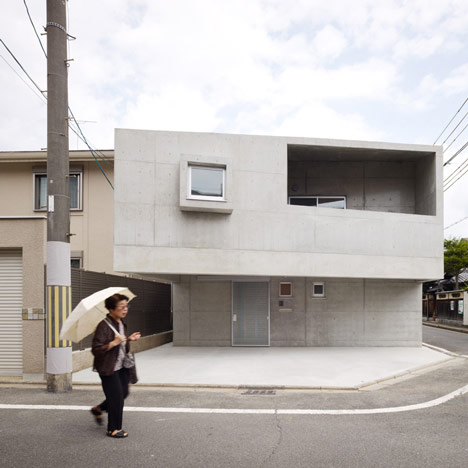
Both a lift and staircase connect the ground floor with the central living room and kitchen on the floor above, where worktops are set at a reduced height.
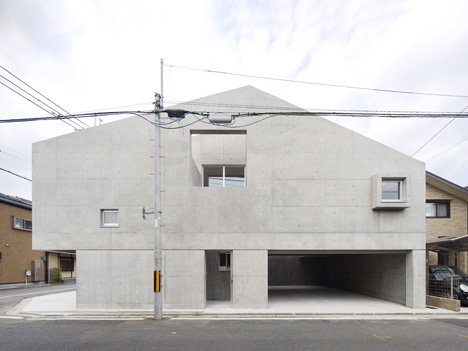
Smaller rooms surround this living/dining room on every side and feature sloping ceilings that don't all correspond with the shape of the roof outside.
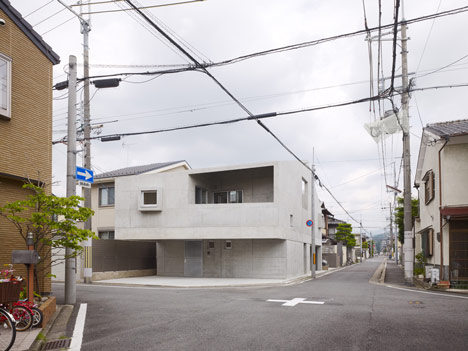
A large square aperture reveals the location of a courtyard along one side of the house, with openings that let natural light into the rooms beyond and below.
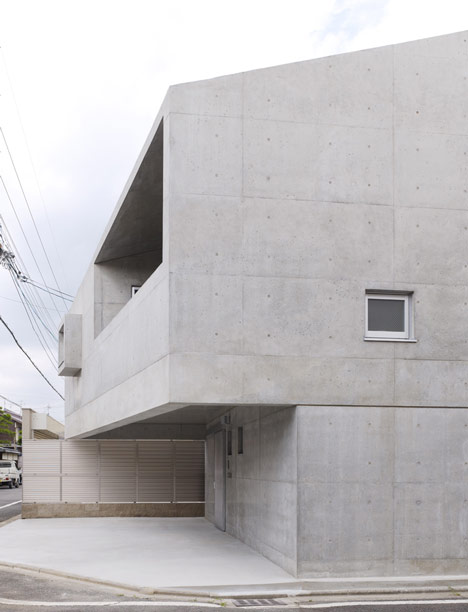
Other recent projects by Torafu Architects include a shelf with a secret drawer and a skincare shop with stained wooden surfaces that look like marble.

See all our stories about Torafu Architects »
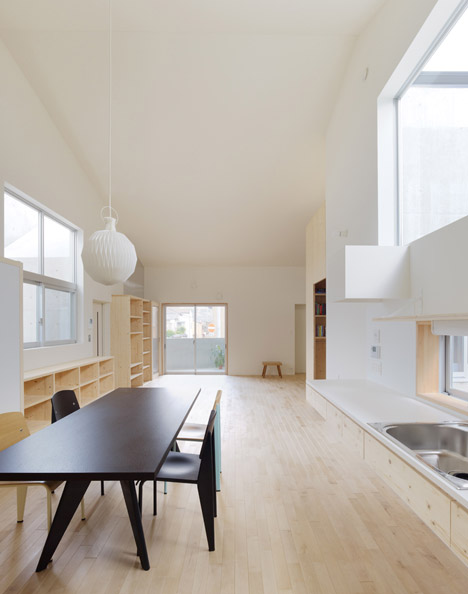
See more Japanese houses on Dezeen »

Photography is by Daici Ano.
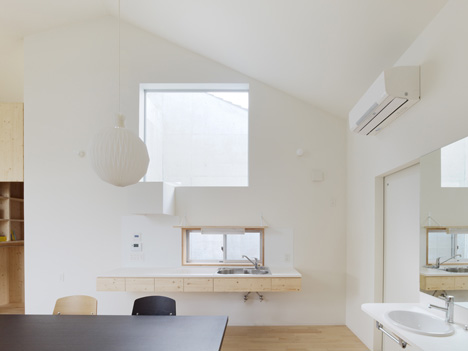
Here's a project description from Torafu Architects:
House in Kitaoji
Located in a quiet housing estate in Kyoto, this house was designed with a hard concrete outer shell in order to protect the client need for privacy from the outside, as well as for accessibility in a wheelchair-bound lifestyle.
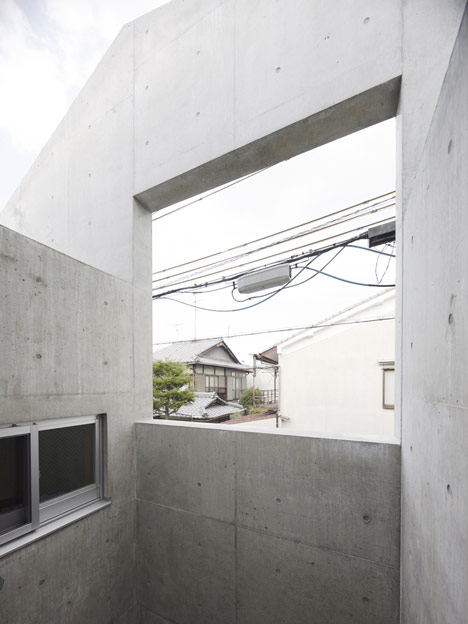
Firstly, to protect the privacy of the family, we built walls along the site boundary to elevate the main living space, which is maximised on the 2nd floor.
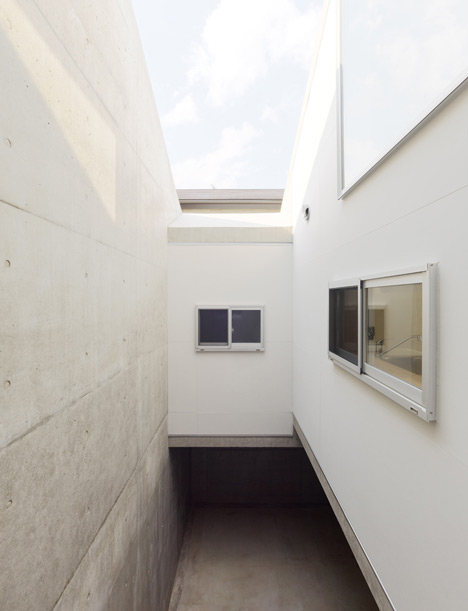
We designed a large central space with individual rooms, wet areas and circulation and other utility spaces surrounding it, to ensure a distance is kept well from the outside.
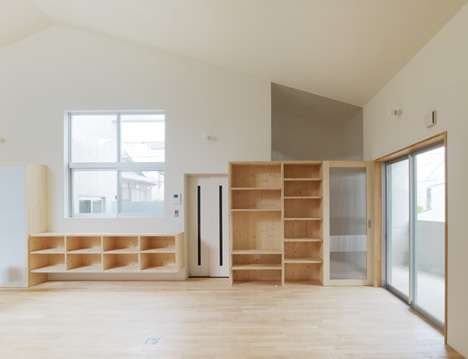
This compact formation also eliminated the need for passageways in this house.
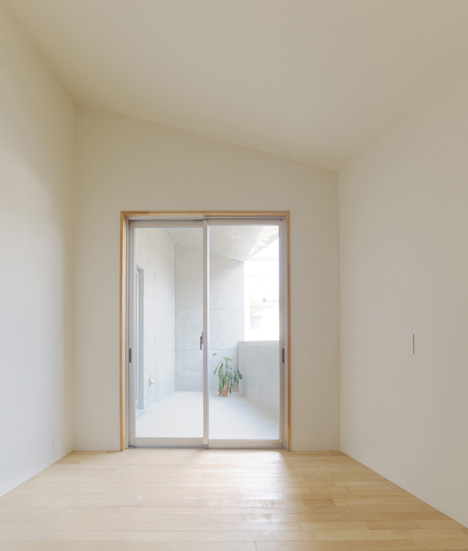
In contrast with the outer wall of this building, we used various kinds of furniture at the central space as partitions to softly separate the internal areas.
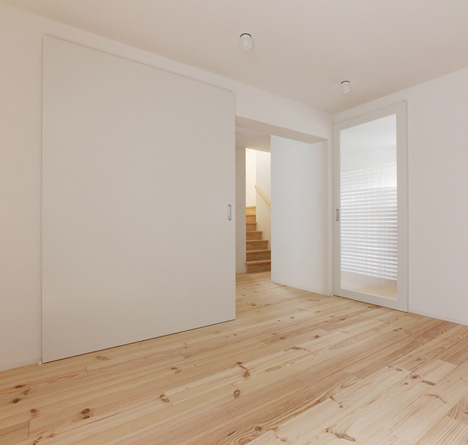
Avoiding windows along the road, we located spaces with open ceilings and a terrace inside the building for light and ventilation.
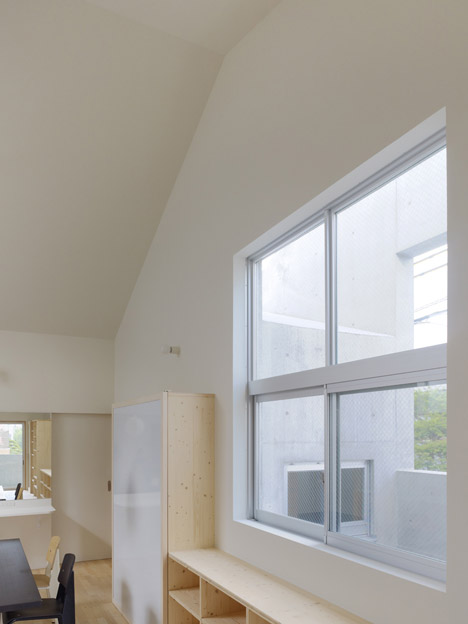
This way, the occupants can feel the outside anywhere from within this central space.
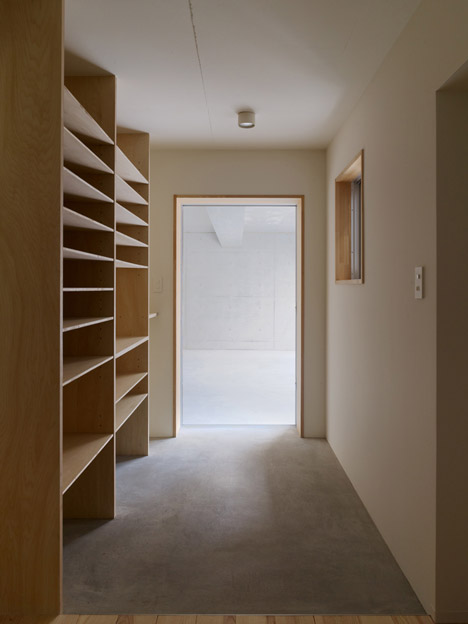
Considering the environment of the site resulted in a building with a gabled form.
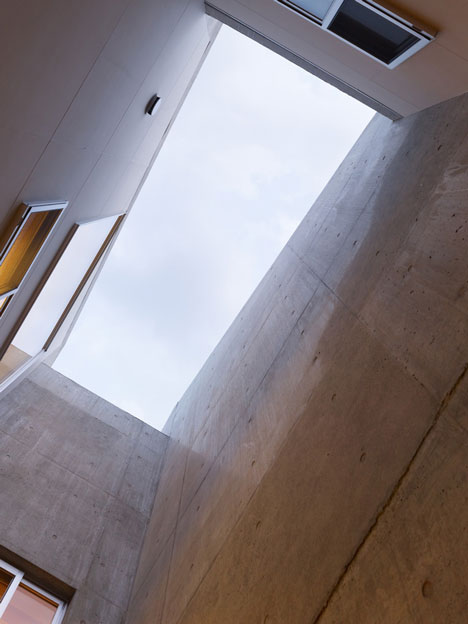
We folded the roofs of the small rooms around the central space into the yard to achieve a funnel shaped cross section, which allows light to enter easily into centre of the house.
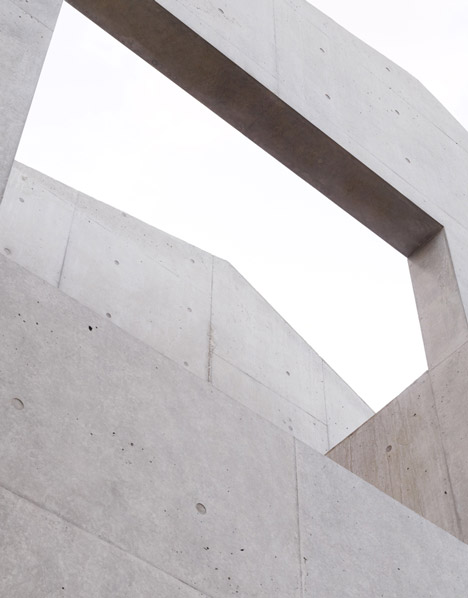
We also individualised the rooms by giving each a different ceiling height.

Although unseen from the outside, within the spaces of these different rooms under this big roof, a bright and open space was made possible.
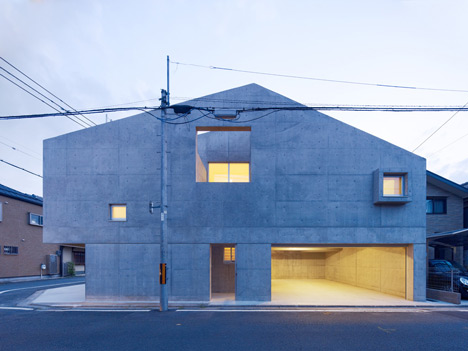
Principle use: House
Facility design: Daiko(Lightings)
Structural design: Takashi Manda Structural Design
Production: Kyoto kensetsu
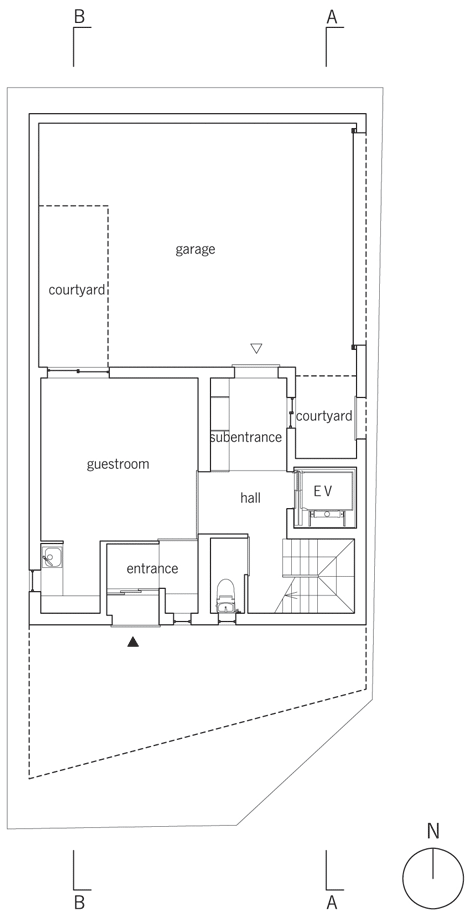
Above: ground floor plan
Building site: Kyoto
Site area: 139.39m2
Total floor area: 133.93m2
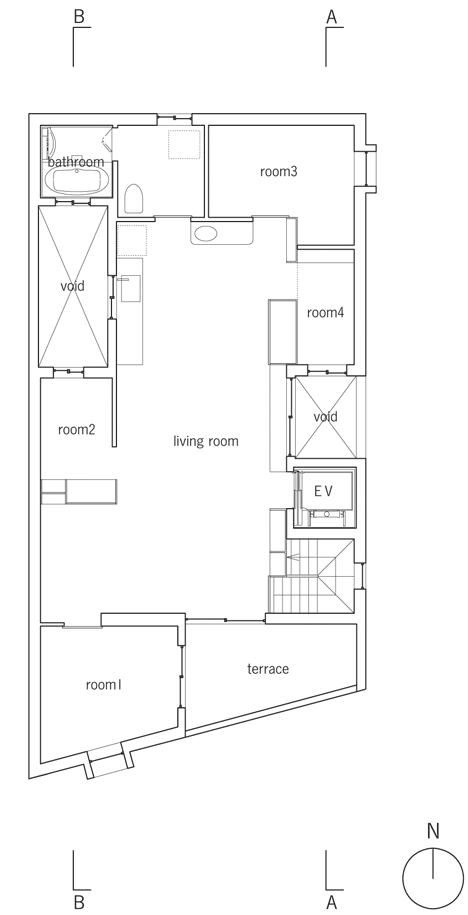
Above: first floor plan
Number of stories: 2F
Structure: RC
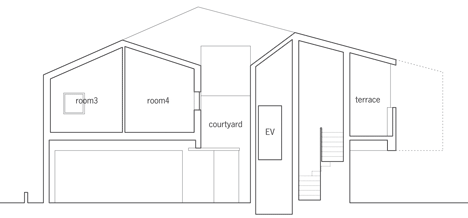
Above: section A-A
Design period: 2010.07-2011.10
Construction period: 2011.11-2012.08
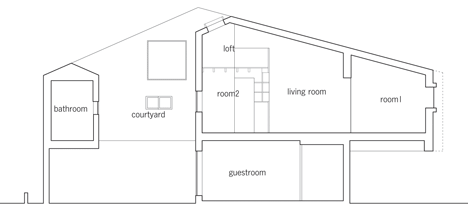
Above: section B-B